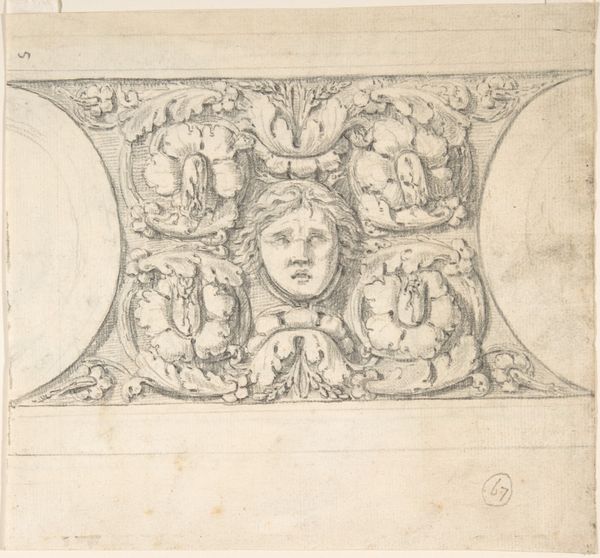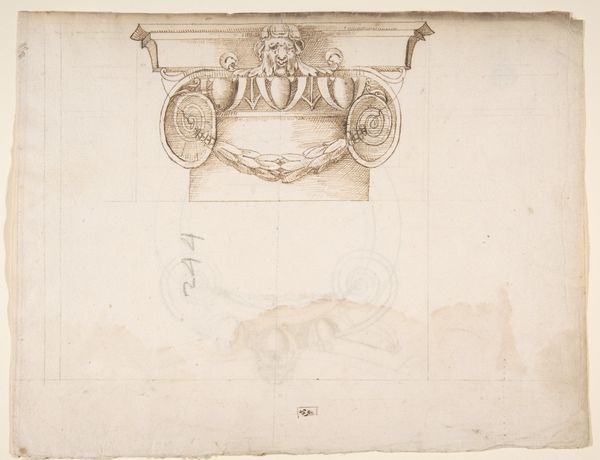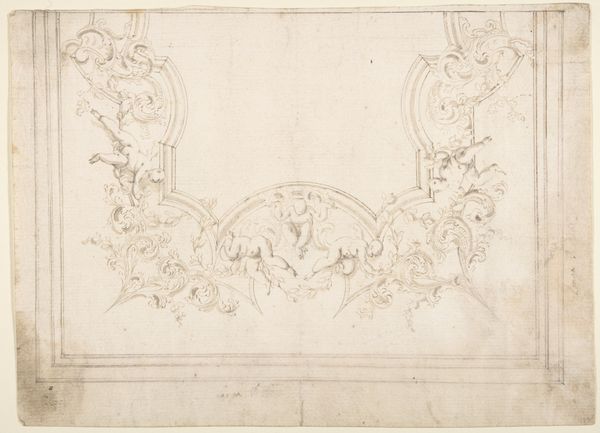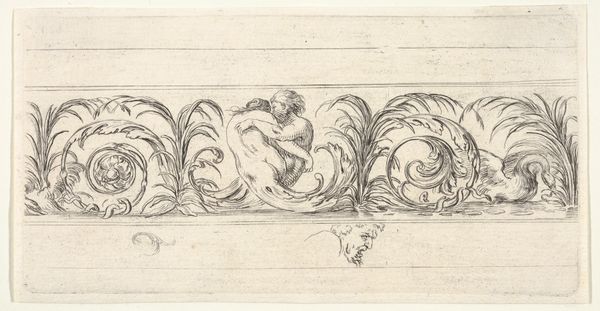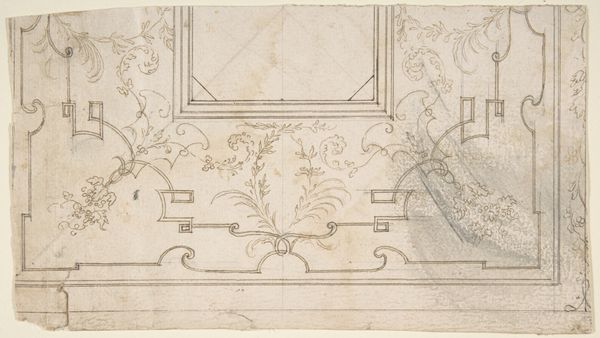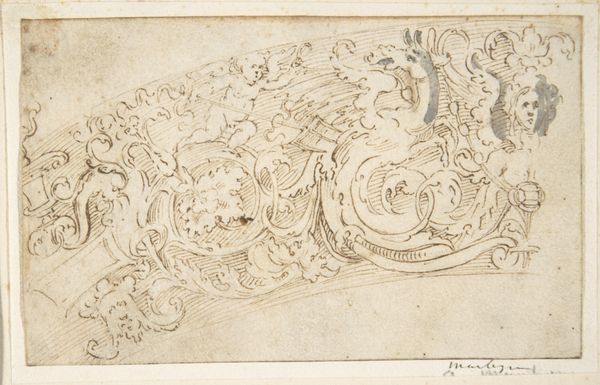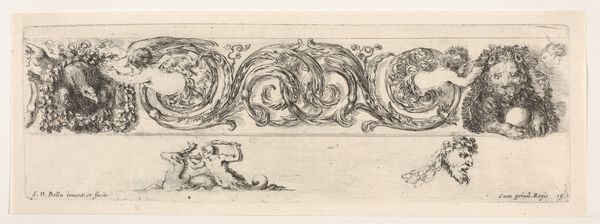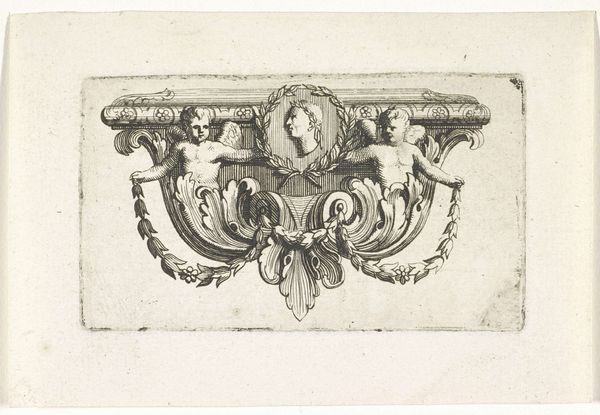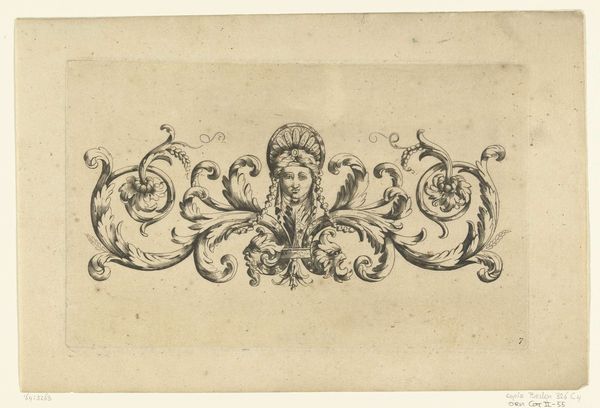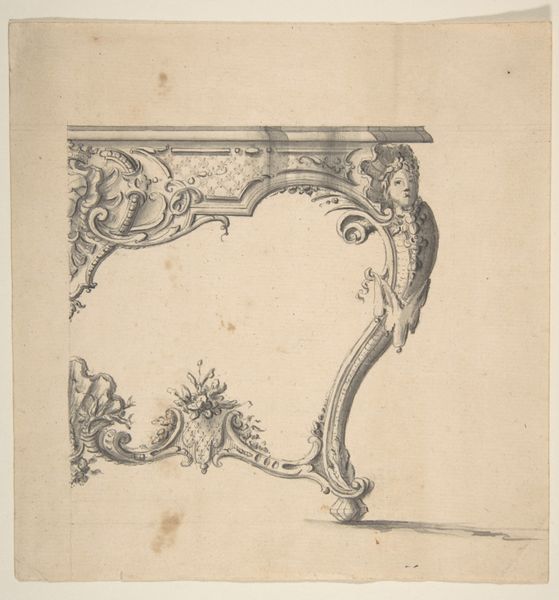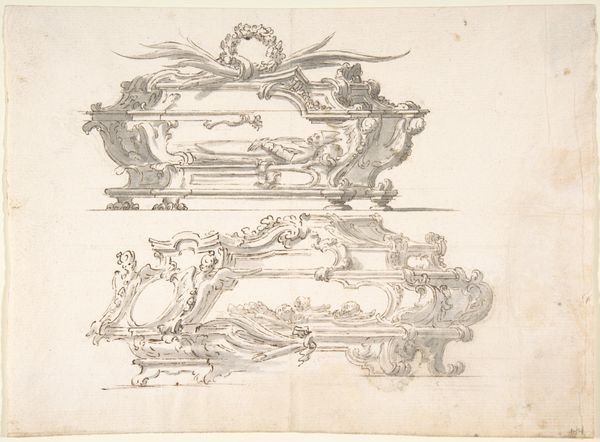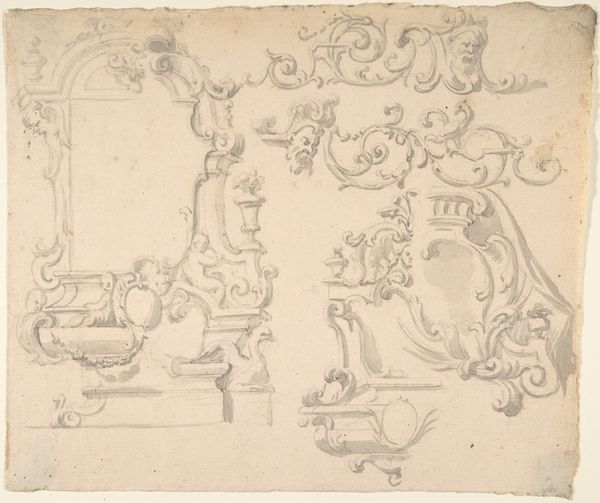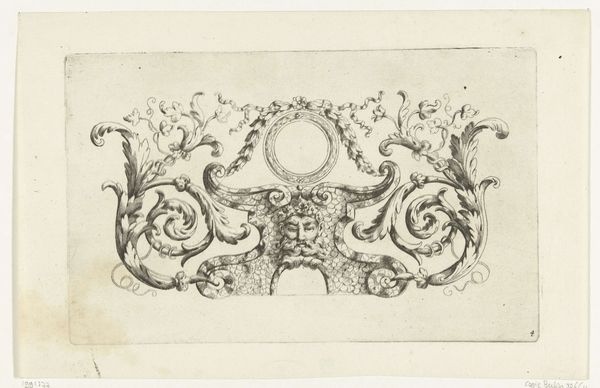
Design for a Frieze: Garland and Animal Skull 1700 - 1800
0:00
0:00
drawing, ornament, paper, ink
#
drawing
#
ornament
#
baroque
#
animal
#
paper
#
ink
Dimensions: 7-13/16 x 10-13/16 in. (19.8 x 27.4 cm)
Copyright: Public Domain
Curator: Well, isn’t this charmingly morbid? Editor: Charming? You think so? I find it captivating. This ink drawing on paper is titled "Design for a Frieze: Garland and Animal Skull," and it's attributed to an anonymous artist from sometime between 1700 and 1800. Currently, it resides here in the Metropolitan Museum. Curator: Anonymity does lend it a certain…everyman quality. I mean, it’s rough, certainly not polished. It looks almost like a daydream scribbled onto parchment—skulls and garlands coexisting in quiet repose. Macabre elegance comes to mind, or is that too much? Editor: Not at all. Consider how the anonymous artist has situated that skull, dead center, the visual anchor, framed by swirling ribbons and what appear to be lush grape vines. The contrasting imagery—decaying remains versus vibrant fruit—serves to underscore baroque fascination with the transient nature of beauty and earthly life. Curator: Right, like a constant memento mori reminder—or it's as if the artist is pointing out the absurd: death decked out in frills! Also, the way the wash is applied adds an ephemeral quality to it, almost ghostly. And the suggestion of an architectural setting grounds the entire vision. Editor: Indeed. And the somewhat unfinished rendering leaves much open for interpretive possibility. You note the skull as “morbid” earlier, but think too about skulls as objects employed within vanitas paintings that, yes, act as constant reminders of death’s ever presence, but are ultimately intended to draw attention towards spiritual concerns beyond earthly, and temporal concerns. Curator: Oh, totally. The Baroque loved a bit of pomp in everything, didn't it? Even in confronting mortality! I think it's fascinating how such seemingly opposite themes blend together and force the viewer to face something greater than ourselves in a very real and aesthetic manner. Editor: I agree. Its stark simplicity invites layered contemplation of our mortality with artistic composition. A powerful drawing overall.
Comments
No comments
Be the first to comment and join the conversation on the ultimate creative platform.
